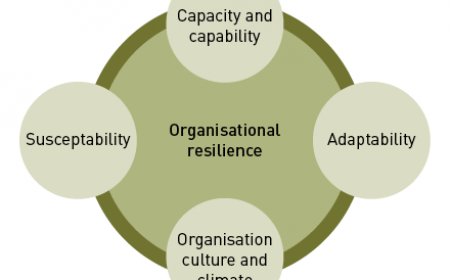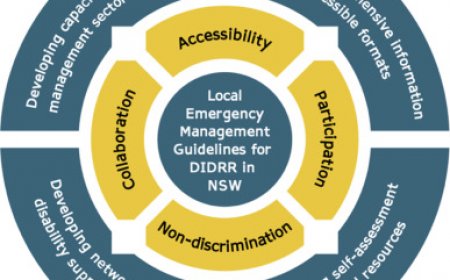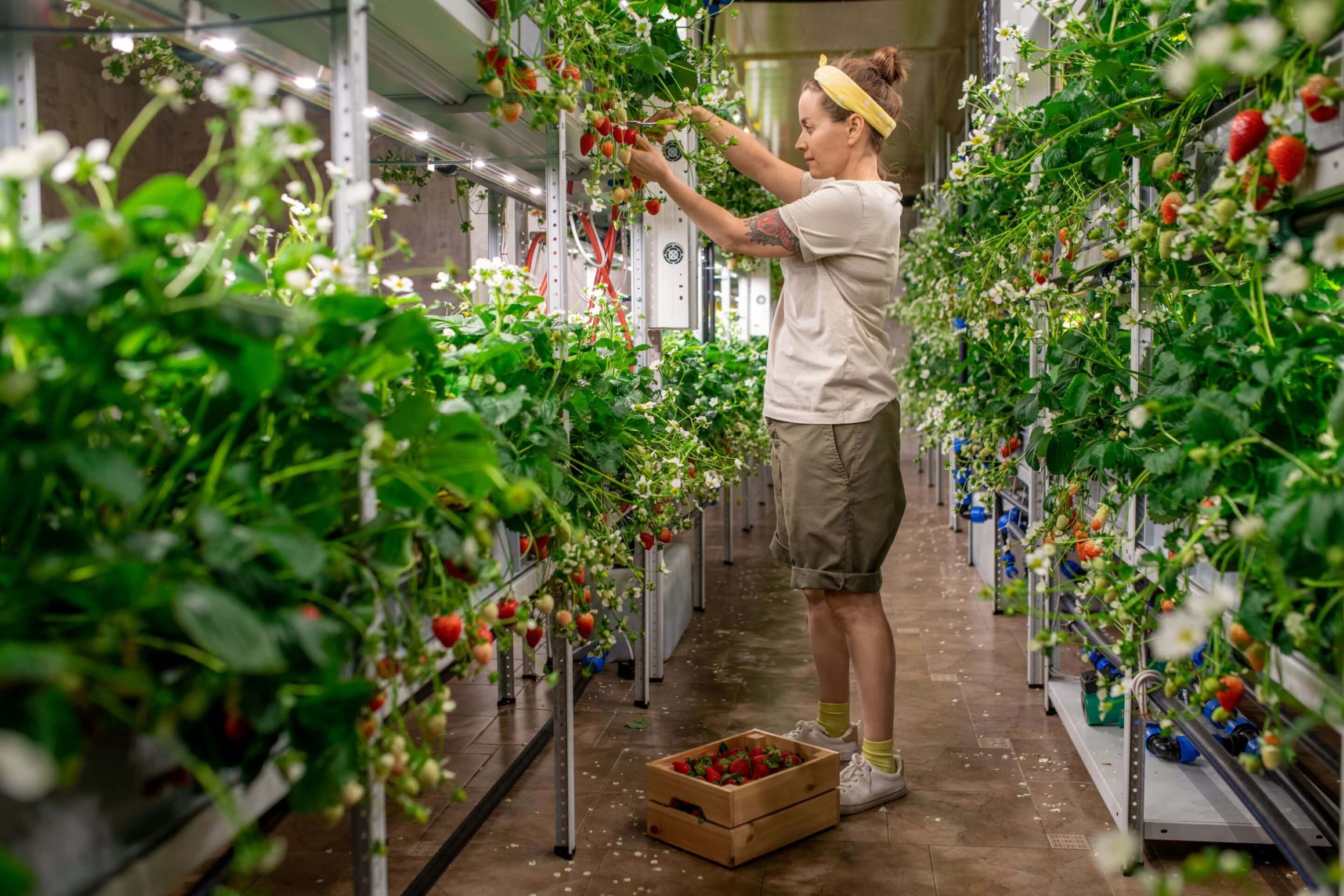India: Agricultural Reforms and Farmer Welfare Programs
Discover the transformative journey of Indian agriculture through recent reforms and welfare programs. Learn about farmer-centric initiatives, technological advancements, and sustainable practices shaping the future of farming in India.
India’s agricultural sector is the backbone of its economy, employing nearly 58% of the population and contributing approximately 16-17% to the GDP . However, despite its significance, Indian agriculture has long grappled with challenges such as fragmented landholdings, outdated farming practices, inadequate infrastructure, and limited access to modern technology. In recent years, the government has introduced a series of agricultural reforms aimed at modernizing the sector, improving farmer welfare, and ensuring food security. This article explores the evolution of these reforms, their impact on farmers, and the broader implications for India’s agrarian economy.
The Historical Context of Indian Agriculture
Post-Independence Agricultural Policies
After gaining independence in 1947, India faced severe food shortages due to low productivity and reliance on imports. To address this crisis, the government implemented the Green Revolution in the 1960s, focusing on high-yield varieties of crops like wheat and rice. The introduction of chemical fertilizers, irrigation systems, and mechanized farming significantly boosted production, transforming India from a food-deficient nation into a self-sufficient one.
However, the benefits of the Green Revolution were unevenly distributed. While states like Punjab, Haryana, and Western Uttar Pradesh reaped substantial rewards, regions with poor irrigation facilities and marginal farmers lagged behind. This disparity laid the foundation for ongoing debates about equitable growth and farmer welfare.
Legacy of Colonial Land Tenure Systems
During British colonial rule, land tenure systems such as the Zamindari, Ryotwari, and Mahalwari systems created structural inefficiencies that persisted post-independence. These systems concentrated land ownership in the hands of a few landlords, leaving tenant farmers vulnerable to exploitation. Efforts to abolish intermediaries through land reforms after independence yielded mixed results, with many states failing to implement redistribution effectively.
Cooperative Movements and Dairy Development
One notable success story in post-independence agricultural development was the White Revolution , spearheaded by Verghese Kurien . Through cooperatives like Amul, India became the world’s largest milk producer, empowering millions of small dairy farmers. This model demonstrated how collective action could drive rural prosperity.
Challenges Faced by Farmers
Despite advancements, Indian farmers continue to face numerous challenges:
- Fragmented Landholdings : Over 86% of farmers are small or marginal landholders, making it difficult to achieve economies of scale.
- Dependence on Monsoons : Nearly 52% of agricultural land relies on rainfall, leaving farmers vulnerable to droughts and floods.
- Market Access Issues : Middlemen dominate the supply chain, often exploiting farmers by offering low prices for their produce.
- Debt Burden : High input costs and low profitability have pushed many farmers into debt, leading to alarming rates of farmer suicides.
These challenges underscore the urgent need for comprehensive reforms to uplift the farming community and ensure sustainable agricultural practices.
Recent Agricultural Reforms: A Paradigm Shift
The Farm Laws of 2020
In September 2020, the Indian government passed three controversial farm laws aimed at liberalizing the agricultural sector:
- Farmers’ Produce Trade and Commerce (Promotion and Facilitation) Act : Allowed farmers to sell their produce outside regulated mandis (markets), promoting direct trade with private buyers.
- Farmers (Empowerment and Protection) Agreement on Price Assurance and Farm Services Act : Enabled contract farming, allowing farmers to enter pre-agreed contracts with buyers.
- Essential Commodities (Amendment) Act : Deregulated the storage of essential commodities, encouraging investment in warehousing and cold chains.
Proponents argued that these reforms would empower farmers by providing them greater freedom to sell their produce, reduce dependency on intermediaries, and attract private investments. Critics, however, feared that deregulation might weaken the Minimum Support Price (MSP) system, leaving small farmers at the mercy of corporate entities.
Economic Rationale Behind the Reforms
The reforms were designed to integrate Indian agriculture into global value chains. By dismantling archaic regulations and fostering competition, they aimed to create a more dynamic marketplace. For example, allowing interstate trade was expected to eliminate regional price disparities and enable farmers to tap into lucrative urban markets.
Social Implications
While the economic rationale seemed sound, the social implications were less clear. Small and marginal farmers expressed concerns about losing bargaining power without the safety net of MSP. They feared that large corporations would monopolize the market, further marginalizing already vulnerable groups.
Farmer Protests and Policy Rollbacks
The implementation of these laws sparked widespread protests, particularly in Punjab, Haryana, and Uttar Pradesh. Thousands of farmers marched to Delhi, demanding the repeal of the laws and legal guarantees for MSP. After over a year of sustained agitation, the government repealed the laws in November 2021, marking a significant victory for the protesting farmers.
While the rollback addressed immediate concerns, it also highlighted the importance of inclusive policymaking and stakeholder consultations in shaping agricultural reforms.
Lessons Learned from the Protest Movement
The farmer protests revealed deep-seated mistrust between the government and the farming community. It underscored the necessity of transparent dialogue and participatory governance when introducing sweeping changes. Additionally, the movement showcased the resilience and unity of farmers, inspiring similar grassroots movements across other sectors.
Government Initiatives for Farmer Welfare
Pradhan Mantri Kisan Samman Nidhi (PM-KISAN)
Launched in February 2019, PM-KISAN provides financial assistance of ₹6,000 per year to eligible farmers in three equal installments. The scheme aims to alleviate income disparities and support small and marginal farmers. As of 2023, over 11 crore farmers have benefited from this initiative.
Impact on Rural Economies
By injecting cash directly into rural households, PM-KISAN has stimulated local economies. Farmers use these funds for purchasing seeds, fertilizers, and other inputs, thereby enhancing productivity. Moreover, the scheme has reduced distress migration by enabling families to sustain themselves in rural areas.
Soil Health Card Scheme
Under this program, soil samples are collected and analyzed to provide farmers with customized recommendations on fertilizer usage. By promoting balanced nutrient management, the scheme seeks to enhance crop yields while preserving soil fertility.
Success Stories
Farmers in states like Madhya Pradesh and Gujarat have reported increased yields and reduced input costs after adopting Soil Health Card recommendations. For instance, a farmer growing soybean saw a 20% increase in yield within two seasons after following tailored advice on nitrogen and phosphorus application.
Pradhan Mantri Fasal Bima Yojana (PMFBY)
PMFBY offers crop insurance coverage to protect farmers against losses caused by natural calamities, pests, and diseases. Premium rates are subsidized, with farmers paying only 1.5% for rabi crops, 2% for kharif crops, and 5% for commercial/horticultural crops.
Challenges in Implementation
Despite its noble intent, PMFBY faces hurdles such as delayed claim settlements and insufficient awareness among beneficiaries. Addressing these issues requires streamlining administrative processes and conducting outreach campaigns.
E-NAM (National Agriculture Market)
E-NAM is an online trading platform that connects farmers with buyers across India. By eliminating geographical barriers, the platform enhances market transparency and enables farmers to fetch better prices for their produce.
Digital Divide Concerns
While E-NAM holds immense potential, its success depends on overcoming the digital divide. Many farmers lack access to smartphones or internet connectivity, limiting their ability to participate fully. Bridging this gap is critical for ensuring inclusivity.
Technological Advancements in Agriculture
Digital Tools and Precision Farming
The adoption of digital tools is revolutionizing Indian agriculture. Mobile apps like Kisan Suvidha and CropIn provide real-time information on weather forecasts, pest control measures, and best farming practices. Similarly, precision farming techniques, including GPS-guided tractors and drone-based monitoring, are helping farmers optimize resource utilization and improve productivity.
Case Study: Drone Technology in Maharashtra
In Maharashtra, drones equipped with multispectral cameras are being used to monitor crop health and detect pest infestations early. This proactive approach has reduced pesticide usage by 30%, saving costs and minimizing environmental harm.
Artificial Intelligence and Data Analytics
AI-powered solutions are being deployed to predict crop yields, detect pest infestations, and recommend optimal planting schedules. For instance, Microsoft’s AI Sowing App uses machine learning algorithms to guide farmers on when to sow seeds based on historical climate data.
Benefits of AI in Agriculture
AI not only improves decision-making but also empowers farmers with actionable insights. For example, predictive analytics can help anticipate market trends, enabling farmers to plan their harvests accordingly.
Renewable Energy Integration
Solar-powered irrigation pumps and biogas plants are reducing farmers’ dependence on conventional energy sources. These initiatives not only lower operational costs but also contribute to environmental sustainability.
Solar Pumps in Rajasthan
Rajasthan’s solar pump initiative has transformed arid landscapes into fertile farmlands. Farmers who previously struggled with erratic power supply now enjoy uninterrupted irrigation, boosting crop diversity and yields.
Sustainable Practices and Climate Resilience
Organic Farming
Several states, including Sikkim and Kerala, have embraced organic farming to promote eco-friendly agricultural practices. Organic certification programs incentivize farmers to adopt natural fertilizers and pesticides, enhancing soil health and biodiversity.
Sikkim’s Success Story
Sikkim became India’s first fully organic state in 2016. Its transition involved rigorous training programs and subsidies for organic inputs. Today, Sikkimese farmers earn premium prices for their organic produce, both domestically and internationally.
Water Conservation Measures
Initiatives like the Jal Shakti Abhiyan focus on rainwater harvesting, watershed development, and micro-irrigation to conserve water resources. Such efforts are critical in mitigating the adverse effects of climate change on agriculture.
Check Dams in Gujarat
Gujarat’s check dam projects have revived groundwater levels, benefiting thousands of farmers. These structures capture monsoon runoff, replenishing aquifers and ensuring year-round water availability.
Climate-Smart Villages
The concept of climate-smart villages involves integrating traditional knowledge with modern technologies to build resilience against extreme weather events. These villages serve as models for sustainable agriculture and community-led adaptation strategies.
Punjab’s Climate-Smart Village Model
In Punjab, climate-smart villages use zero-till farming and laser leveling to conserve water and reduce emissions. Farmers report higher yields and lower input costs, proving the viability of sustainable practices.
Challenges Ahead: Bridging Gaps in Implementation
Access to Credit
Although schemes like PM-KISAN provide financial aid, many farmers still struggle to access affordable credit. Strengthening institutional lending mechanisms and expanding outreach to remote areas remain key priorities.
Infrastructure Deficits
Poor road connectivity, inadequate storage facilities, and limited access to electricity hinder the effective implementation of welfare programs. Addressing these infrastructural gaps is essential for maximizing the impact of reforms.
Awareness and Adoption
Many farmers lack awareness about government schemes and technological innovations. Conducting regular training sessions and leveraging local institutions can bridge this knowledge gap.
Tips for Understanding Agricultural Reforms in India
- Study Historical Trends : Analyze how past policies shaped the current landscape.
- Monitor Farmer Movements : Stay informed about grassroots activism and its influence on policy decisions.
- Evaluate Technological Impact : Assess how new tools are transforming traditional farming methods.
- Track Budget Allocations : Examine government spending on agriculture and allied sectors.
- Focus on Sustainability : Understand the role of eco-friendly practices in long-term growth.
Comparison Table: Key Agricultural Reforms and Their Impact
Review: Verdict on Agricultural Reforms
India’s agricultural reforms reflect a delicate balancing act between modernization and inclusivity. While initiatives like PM-KISAN and E-NAM have yielded positive results, challenges persist in terms of implementation and scalability. Moving forward, a collaborative approach involving policymakers, farmers, and industry stakeholders will be crucial to achieving sustainable growth.
Conclusion
Agriculture remains central to India’s socio-economic fabric, and the success of reforms hinges on addressing the needs of small and marginal farmers. By combining technological innovation, sustainable practices, and robust welfare programs, India can pave the way for a resilient and prosperous agricultural sector. As the nation strives toward doubling farmers’ incomes by 2025, continued focus on inclusivity and adaptability will be paramount.
10 FAQs About Indian Agricultural Reforms and Farmer Welfare Programs
-
What is the Green Revolution?
The Green Revolution refers to the introduction of high-yield crop varieties and modern farming techniques in the 1960s to boost agricultural productivity. -
What is MSP, and why is it important?
Minimum Support Price (MSP) ensures farmers receive a guaranteed price for their produce, protecting them from market fluctuations. -
Why did farmers protest against the 2020 farm laws?
Farmers feared the laws would dismantle the MSP system and leave them vulnerable to exploitation by corporations. -
How does PM-KISAN help farmers?
PM-KISAN provides direct financial assistance of ₹6,000 annually to eligible farmers. -
What is E-NAM, and how does it work?
E-NAM is an online platform that facilitates transparent trading of agricultural produce across India. -
What are the benefits of organic farming?
Organic farming improves soil health, reduces chemical use, and promotes biodiversity. -
How does PMFBY protect farmers?
PMFBY offers crop insurance coverage to safeguard farmers against losses due to natural disasters. -
What role does technology play in agriculture?
Technology enhances productivity, reduces costs, and enables data-driven decision-making. -
What are climate-smart villages?
Climate-smart villages integrate traditional knowledge with modern techniques to build resilience against climate change. -
What are the main challenges facing Indian agriculture?
Fragmented landholdings, dependence on monsoons, and inadequate infrastructure are major hurdles.
What's Your Reaction?
 Like
0
Like
0
 Dislike
0
Dislike
0
 Love
0
Love
0
 Funny
0
Funny
0
 Angry
0
Angry
0
 Sad
0
Sad
0
 Wow
0
Wow
0










































